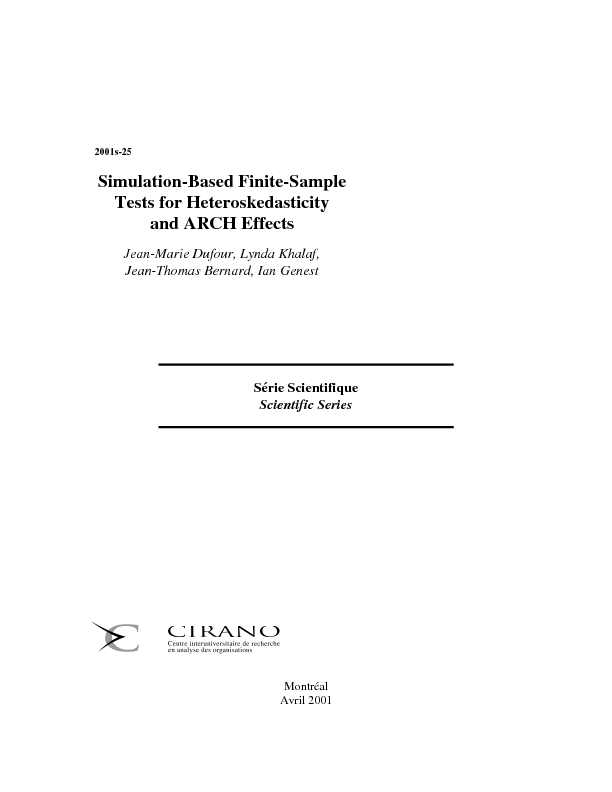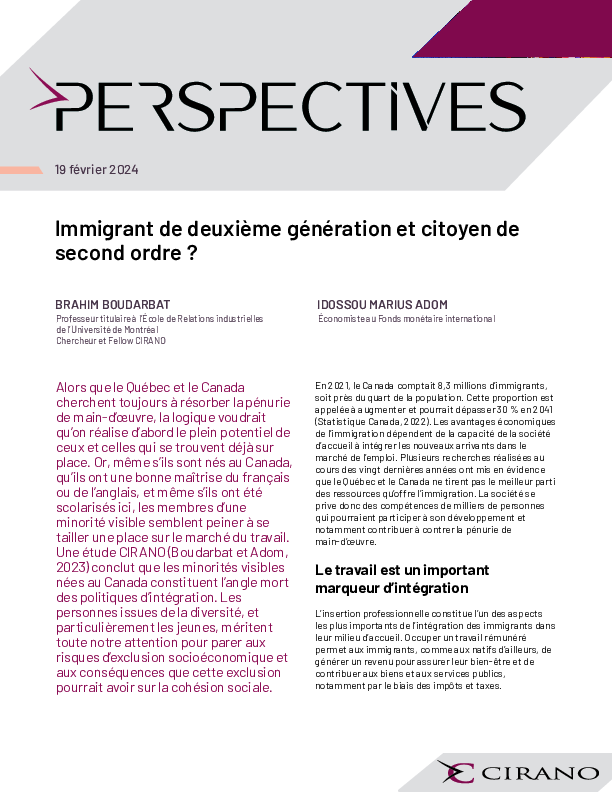Simulation-Based Finite-Sample Tests for Heteroskedasticity and ARCH Effects
A wide range of tests for heteroskedasticity have been proposed in the econometric and statistics literatures. Although a few exact homoskedasticity tests are available, the commonly employed procedures are quite generally based on asymptotic approximations which may not provide good size control in finite samples. There has been a number of recent studies that seek to improve the reliability of common heteroskedasticity tests using Edgeworth, Bartlett, jackknife and bootstrap methods. Yet the latter remain approximate. In this paper, we describe a solution to the problem of controlling the size of homoskedasticity tests in linear regression contexts. We study procedures based on the standard test statistics [e.g., the Goldfeld-Quandt, Glejser, Bartlett, Cochran, Hartley, Breusch-Pagan-Godfrey, White and Szroeter criteria] as well as tests for autoregressive conditional heteroskedasticity (ARCH-type models). We also suggest several extensions of the existing procedures (sup-type or combined test statistics) to allow for unknown breakpoints in the error variance. We exploit the technique of Monte Carlo tests to obtain provably exact p-values, for both the standard and the new tests suggested. We show that the MC test procedure conveniently solves the intractable null distribution problem, in particular those raised by the sup-type and combined test statistics as well as (when relevant) unidentified nuisance parameter problems under the null hypothesis. The method proposed works in exactly the same way with both Gaussian and non-Gaussian disturbance distributions [such as heavy-tailed or stable distributions]. The performance of the procedures is examined by simulation. The Monte Carlo experiments conducted focus on: (1) ARCH, GARCH and ARCH-in-mean alternatives; (2) the case where the variance increases monotonically with: (i) one exogenous variable, and (ii) the mean of the dependent variable; (3) grouped heteroskedasticity; (4) breaks in variance at unknown points. We find that the proposed tests achieve perfect size control and have good power.
[ - ]




